Michael Haneke on ‘Time of the Wolf’
How dramatically has Time of the Wolf changed in the ten years since you wrote the script?
The script didn’t change at all. The one thing that did change is that originally it was going to be a three-hour film. The first hour was to have taken place in an indeterminate European capital in which things are slowly starting to go wrong. There are problems we don’t quite understand: the water doesn’t work and neither does the electricity. This was to have been set in a ghetto for rich people such as you find in some American and South American cities, enclaves with police protection. Then one of the families decides it would be easier to go to their country house. And that’s exactly where the finished film picks up. After 11 September 2001 I felt it was no longer necessary to explain this buildup. It’s now easily conceivable we could be faced with a similar catastrophe.
Trying, as you do, to avoid Hollywood-style button-pushing moments, what do you structure your films around?
The danger with the catastrophe genre in Hollywood is that it’s one of exaggeration, so it makes catastrophe seem attractive – something we can enjoy because it’s so unrealistic. My work consists of trying to reach people on an emotional level, raising the level of audience identification as high as possible by avoiding overt stylisation or exaggeration. Lots of people have talked about the fact that many of the sequences in Time of the Wolf are very dark on the screen. That has the simple explanation that at night, in a country deprived of electricity, it is going to be very dark. And people react in the dark in an entirely different manner. If someone is coming towards you on a well-lit street, they simply go past and that’s that. But if you’re in the dark that person is perceived as a threat. Lighting the film minimally allows the audience to experience this unease and fear.
But how do you build a drama when you’re deliberately eschewing so many established techniques?
Funny Games is structured like a classical thriller despite the fact that it’s a parody. But in this case the structure arose through following the way people would respond in a situation like this. And as a development of such events in terms of character, this is very classical too.
It begins with individuals with individual problems. People who can’t cope with these themselves then join groups and as the groups become larger the problems change.
Are you a big consumer of science fiction?
I’ve read the classics – the novel of Solaris and Olaf Stapledon’s book Last and First Men – but I’ve probably read only ten science-fiction books in my whole life. And I’ve seen even fewer films. I like Blade Runner and obviously Solaris, though I don’t see that so much as a science-fiction film, more a metaphoric film. I’m not a huge fan of these films, especially as so many of them are dumb.
Did you look at any science fiction in order to consider what not to do?
I don’t know enough about the genre to be able to avoid or to seek out these problems. But making a science-fiction film would interest me very little. Time of the Wolf is about contemporary society – currently four-fifths of humanity live in conditions far worse than those depicted here. The only thing I did was to take those living conditions and transpose them into our geographical area. Catastrophes for us are things that take place somewhere else. So this is not a film for the third world – they don’t need to see it. This is for the wealthy nations.
Did you do any special preparation with the cast?
In all my films the actors are placed in difficult situations. I’m not a huge fan of long rehearsals – in my experience, when you do that you reduce the spontaneity. I worked for many years as a theatre director and there the rehearsal time is much longer, but when it comes to making films I prefer to work on the problems on set.
The camera style is about pushing the light to the limits. Was it derived in part from a particular idea of cinema?
The idea was always to depict things as closely as possible to the way they would be. Usually when you’re shooting in the dark it’s enough to have one spotlight illuminating things. Here we shot the scenes in the barn, with the cigarette lighter and the straw, with natural light, but everything else became very difficult. You needed a little bit of lighting but it needed to be very diffuse, otherwise it would look like a spotlight. So, for example, when the girl is sitting on the railway track a little below her brother, they had to light up the whole scene, a vast area, with non-specific lighting.
There are separate killings of a horse and a goat, both very realistic. Since the British certification authorities take these matters very seriously, how were these scenes achieved?
The goat was given a tranquilliser. If you look at the shot closely you can see it’s still breathing. We had blood on the blade of the knife so it looks as if the goat is bleeding. There are two shots of the horse. First you see it falling when it’s shot – it was trained to do that on command. The horse whose throat was cut was going to be killed anyway and the shot was taken in a slaughterhouse. It’s so hypocritical, the censorious reaction, especially from carnivores.
You invoke several semi-religious myths – the group of the 36 Just people, which is also a Judaic story, and the people who can redeem the human race by jumping into fires.
Each of these stories can be understood one way or another. Ben is willing to sacrifice himself in the flames for the good of the community but we have no idea if the story he’s heard from the man who swallows the razorblade is true or not. And that’s also the point made by Jean (Thierry van Werveke), the man who saves Ben from the flames. He says that maybe tomorrow things will be different, and that what counts is the intention, the fact that the boy was ready to take that step. How this works is for each spectator to decide for themselves. In the same way, the story of the Just people is told by a woman whom most spectators will think is crazy, but that doesn’t take away from the fact that the insane often reveal the truth. Such stories inevitably evoke a religious or mythological context and I deliberately leave the interpretation open.
Interview by Nick James, Sight and Sound, October 2003
Time of the Wolf Le Temps du loup
Director: Michael Haneke
©: Wega-Film, Bavaria-Film, France 3 Cinéma, Arte France Cinéma
Production Companies: France 3 Cinéma, Arte France Cinéma
Presented by: Films du Losange (Paris), Wega-Film, Bavaria-Film
With: Österreichischer Rundfunk-Fernsehen, Bayerischer Rundfunk, ARTE
With the participation of: Canal+, CNC – Centre national de la cinémat, Österreichisches Filminstitut, Filmfonds Wien, FilmFernsehFonds Bayern
With the support of: Eurimages Conseil de l’Europe
Executive Producers: Michael Katz, Margaret Ménégoz
Producers: Margaret Ménégoz, Veit Heiduschka
Co-producer: Michael Weber
Production Co-ordinator: Ulrike Lässer
France Production Manager: Nathalie Nghet
Austria Production Manager: Michael Katz
Unit Production Manager: Roman Haschberger
France Unit Manager: Fabien Courage
Unit Manager: Mathias Mayer
Location Manager: Peter Ecker
1st Assistant Director: Hanus Polak Jr
2nd Assistant Director: Katharina Biró, Kathrin Resetarits, Jens Christian Borner
Script Supervisor: Jean Baptiste Filleau
Children Casting: Kris Portier de Bellair
France Casting: Brigitte Moidon
Austria Casting: Markus Schleinzer
Screenplay: Michael Haneke
Director of Photography: Jürgen Jürges
Steadicam Operator: Jörg Widmer
Special Visual Effects: Geoffrey Kleindorfer
Special Effects: Tissi Brandhofer
Editors: Monika Willi, Nadine Muse
Additional Editors: Alarich Lenz, Yannick Coutheron
Art Director: Christoph Kanter
Set Decorator: Hans Wagner
Costumes: Lisy Christl
Make-up/Hair: Waldemar Pokromski, Ellen Just, Claus Lulla, Nicolaj Espinosa Bach, Tu Nguyen, Ela Bumbul, Stéphane Malheu
Make-up for Isabelle Huppert: Thi-Loan Nguyen
Sound Recording: Guillaume Sciama, Jean-Pierre LaForce
Sound Retakes: William Franck
Studio Sound Engineer: Olivier Dô Húu
Sound Effects: Pascal Chauvin
Post-synchronizations: Alter Ego, Hervé Icovic
Animal Wranglers: Animal Action
Horse Wrangler: Monika Fiserova
Publicity: Mathilde Incerti
Cast
Isabelle Huppert (Anne Laurent)
Anaïs Demoustier (Eva Laurent)
Lucas Biscombe (Ben Laurent)
Hakim Taleb (the boy/young runaway)
Patrice Chéreau (Thomas Brandt)
Béatrice Dalle (Lise Brandt)
Olivier Gourmet (Koslowski)
Brigitte Roüan (Béa)
Daniel Duval (Georges Laurent)
Branko Samarovski (policeman)
Thierry van Werveke (Jean)
Maurice Bénichou (Monsieur Azoulay)
Maryline Even (Madame Azoulay)
Florence Loiret-Caille (Nathalie Azoulay)
Pierre Berriau (chalet man)
Valérie Moreau (chalet woman)
Ina Strnad
Costel Cascaval (Constantin)
Rona Hartner (Arina)
Luminita Gheorghiu (Mrs Homolka)
Adriana Trandafir
Michaël Abiteboul (armed man)
Franck Gourlat (water seller)
François Hautesserre (music lover)
Maria Hofstätter (quarrelsome woman)
Serge Riaboukine (the leader)
Claude Singeot (razor blade man)
Roman Agrinz, Alexander Barta, Peter Bartak, Gabriela Bauer, Ileana Brancau, Georg Friedrich, Simon Hatzl, Alexandra Hörmann, Margita Huttova, Edmund Jäger, Silke Jandl, Dorothea Kocsis, Natascha Kuliskova, Carmen Loley, Andreas Lust, Marian Mitas, Martin Nahalka, Klaus Ortner, Petru Pecican, Andreas Pühringer, Sonja Romei, Maria Speranza Paraschiv, Christoph Theussl, Sophie Wimmer-Lieb, Christian Wlach, Mira Zeichmann
France-Austria-Germany 2003©
113 mins
Digital
The screening on Wed 25 Jun will be introduced by Geoff Andrew, Film Critic, Lecturer and Programmer
SIGHT AND SOUND
Never miss an issue with Sight and Sound, the BFI’s internationally renowned film magazine. Subscribe from just £25*
*Price based on a 6-month print subscription (UK only). More info: sightandsoundsubs.bfi.org.uk

BFI SOUTHBANK
Welcome to the home of great film and TV, with three cinemas and a studio, a world-class library, regular exhibitions and a pioneering Mediatheque with 1000s of free titles for you to explore. Browse special-edition merchandise in the BFI Shop.We're also pleased to offer you a unique new space, the BFI Riverfront – with unrivalled riverside views of Waterloo Bridge and beyond, a delicious seasonal menu, plus a stylish balcony bar for cocktails or special events. Come and enjoy a pre-cinema dinner or a drink on the balcony as the sun goes down.
BECOME A BFI MEMBER
Enjoy a great package of film benefits including priority booking at BFI Southbank and BFI Festivals. Join today at bfi.org.uk/join
BFI PLAYER
We are always open online on BFI Player where you can watch the best new, cult & classic cinema on demand. Showcasing hand-picked landmark British and independent titles, films are available to watch in three distinct ways: Subscription, Rentals & Free to view.
See something different today on player.bfi.org.uk
Join the BFI mailing list for regular programme updates. Not yet registered? Create a new account at www.bfi.org.uk/signup
Programme notes and credits compiled by Sight and Sound and the BFI Documentation Unit
Notes may be edited or abridged
Questions/comments? Contact the Programme Notes team by email

